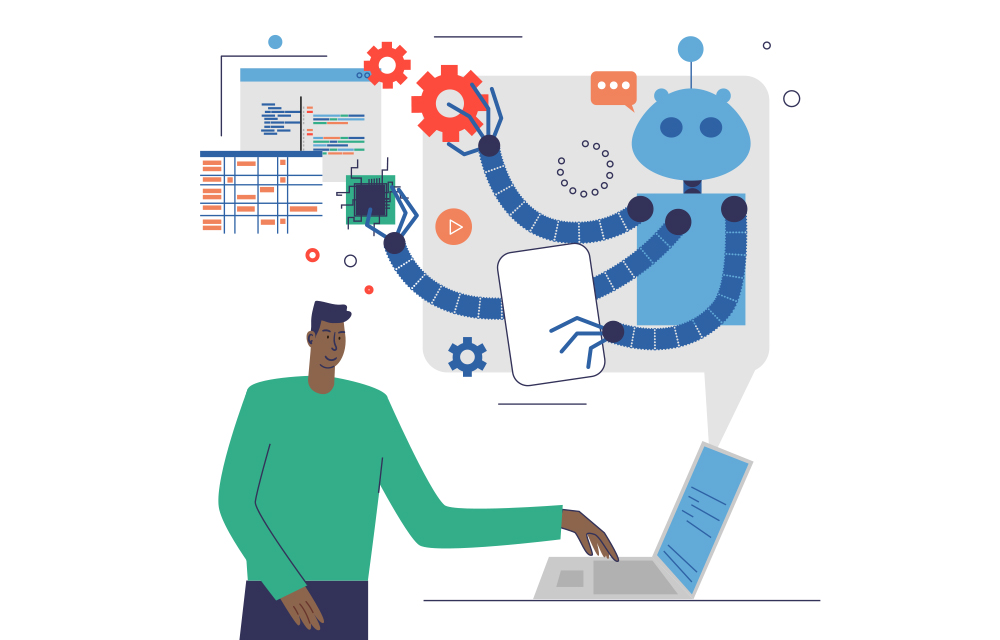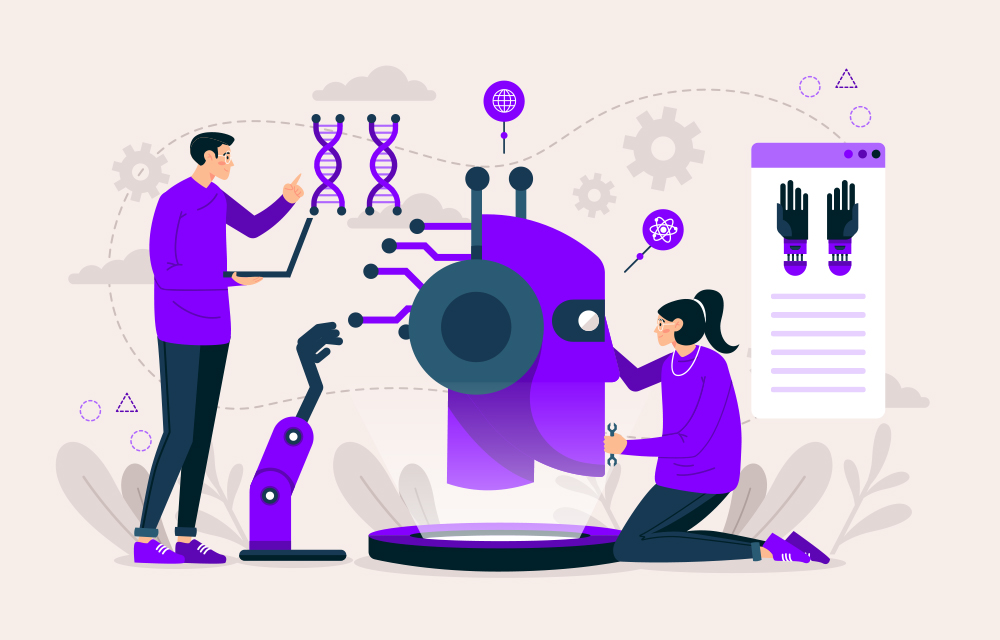According to a report by the McKinsey Global Institute, by 2030, up to 14% of administrative jobs could be aut...
Brickwork Blogs


Artificial Intelligence (AI) is a branch of computer science that focuses on creating systems and technologies that can perform tasks typically requiring human intelligence. In today’s blog we uncover the concept of AI and its capabilities, understand why it is important to understand your business before the introduction of AI and so much more.
AI and its capabilities
1. Machine Learning: AI systems can learn from data and make predictions or decisions based on patterns and information they have observed. This includes supervised learning, unsupervised learning, and reinforcement learning.
2. Natural Language Processing (NLP): NLP enables AI systems to understand, interpret, and generate human language. This technology is used in chatbots, virtual assistants, and language translation services.
3. Computer Vision: AI can analyze and interpret visual information from images and videos. This is used in facial recognition, object detection, autonomous vehicles, and medical image analysis.
4. Speech Recognition: AI can convert spoken language into text, making voice commands and voice assistants like Siri and Alexa possible.
5. Robotics: AI-driven robots can perform tasks ranging from simple automation in manufacturing to complex operations like surgical procedures.
Applications of AI
1. Recommendation Systems: AI algorithms can analyze user preferences and behavior to provide personalized recommendations, such as those used by Netflix and Amazon.
2. Data Analysis: AI can process and analyze large datasets quickly and accurately, identifying trends and patterns that may not be apparent to humans.
3. Autonomous Systems: AI can power autonomous vehicles, drones, and even autonomous industrial equipment, making decisions based on sensor inputs and environmental data.
4. Game Playing: AI algorithms can excel in complex strategy games like chess, Go, and video games. AlphaGo, developed by DeepMind, famously defeated the world champion Go player.
5. Healthcare: AI is used for disease diagnosis, drug discovery, and patient data analysis, improving both the accuracy and efficiency of medical processes.
6. Finance: AI is employed in algorithmic trading, fraud detection, credit scoring, and risk assessment in the financial industry.
7. Virtual Assistants: AI-driven virtual assistants like Siri, Alexa, and Google Assistant can answer questions, perform tasks, and control smart home devices.
8.Language Translation: AI can automatically translate text and speech between different languages, making global communication easier.
9. Generative Models: AI models like GPT-3 can generate human-like text, art, and music, opening up new possibilities in content creation.
10. Security: AI is used for cybersecurity, identifying and mitigating threats in real-time by analyzing network traffic and system behavior.
11. Environmental Monitoring: AI can analyze environmental data to monitor and predict weather patterns, detect natural disasters, and track climate change.
12. Education: AI can personalize learning experiences, adapt to individual student needs, and provide automated grading and feedback.
13. Accessibility: AI technologies are helping people with disabilities by providing speech recognition, text-to-speech, and other assistive tools.
14. Customer Service: AI-powered chatbots and virtual agents can provide 24/7 customer support and assist with inquiries and problem-solving.
15. Scientific Research: AI is used in various scientific fields, including genomics, astronomy, and physics, to analyze complex data and assist with research.
AI continues to evolve, and its capabilities are expanding rapidly. However, ethical considerations, transparency, and responsible use are critical aspects that must be carefully addressed as AI becomes more integrated into society.

Importance of understanding your business before implementing AI
Understanding your business before introducing AI is essential for strategic planning, resource allocation, risk mitigation, and ethical considerations. It ensures that AI is applied in a way that aligns with your business goals and maximizes its potential benefits while minimizing potential pitfalls. Let’s take a deeper look below:
1. Alignment with Business Goals: AI should not be adopted blindly but should align with your business objectives. By understanding your business, you can identify specific areas where AI can add value, such as cost reduction, revenue generation, or process improvement.
2. Targeted Problem Solving: Knowing your business allows you to identify the specific challenges or opportunities you want AI to address. This enables you to select or develop AI solutions that are tailored to your needs rather than adopting generic AI applications that may not be suitable.
3. Resource Allocation: Implementing AI can be resource-intensive, both in terms of finances and personnel. Understanding your business helps you allocate resources effectively, ensuring that you invest in the right AI technologies and the right talent to support them.
4. Data Availability and Quality: AI heavily relies on data. Understanding your business helps you assess the availability and quality of your data. It allows you to determine whether you have enough data for AI training, whether it's structured properly, and whether it contains the relevant information needed for AI applications.
5. Ethical Considerations: AI can introduce ethical and privacy concerns. Understanding your business helps you anticipate potential ethical challenges related to AI, such as bias in algorithms or data privacy issues. This enables you to implement AI in a responsible and ethical manner.
6. Change Management: Implementing AI often requires changes in processes and workflows. Understanding your business operations allows you to plan for these changes, manage employee expectations, and provide the necessary training and support for a smooth transition.
7. Integration with Existing Systems: AI solutions should seamlessly integrate with your existing IT infrastructure. Understanding your business's IT architecture and systems helps you evaluate how AI will fit into your technology ecosystem and whether any modifications or integrations are required.
8. Risk Assessment: Implementing AI can involve risks, including technical risks, regulatory risks, and security risks. Understanding your business allows you to assess these risks and develop strategies to mitigate them effectively.
9. Measuring Success: To determine the success of AI implementation, you need clear metrics and key performance indicators (KPIs). Understanding your business helps you define these metrics based on your specific goals and objectives.
10. Competitive Advantage: By understanding your business and industry, you can identify opportunities to gain a competitive edge through AI. This might involve using AI to improve customer service, optimize supply chain logistics, or develop innovative products and services.
11. Long-Term Strategy: AI is not a one-time implementation but an ongoing journey. Understanding your business helps you develop a long-term AI strategy that evolves with your changing needs and market conditions.
How to monitor AI implementation and measure success?
Monitoring AI implementation and measuring its success is essential to ensure that your AI initiatives are achieving their intended goals and delivering value to your organization. Here are steps you can take to effectively monitor and measure AI implementation:
1. Set Clear Objectives and Key Performance Indicators (KPIs):
Define specific objectives and KPIs that align with your business goals and the purpose of the AI implementation. These metrics should be measurable and time bound.
2. Establish a Baseline:
Before implementing AI, establish a baseline measurement of the current state or performance in the areas targeted for improvement. This will serve as a point of comparison.
3. Continuous Data Collection:
Implement data collection processes that capture relevant information related to your AI initiatives. This data may include user interactions, system performance, and business outcomes.
4. Data Quality Assurance:
Ensure that the data collected is accurate, reliable, and representative of the processes or activities you are monitoring. Data quality is essential for meaningful analysis.
5. Real-time Monitoring:
Whenever possible, set up real-time monitoring of AI systems. This allows you to detect issues and opportunities for optimization as they occur.
6. Regular Reporting and Analysis:
Analyze the collected data regularly to assess how AI is performing. Create reports or dashboards to visualize trends, anomalies, and performance against KPIs.
7. User Feedback and Satisfaction:
Solicit feedback from end-users or stakeholders who interact with AI systems. Their input can provide valuable insights into the user experience and any issues that need attention.
8. Performance Benchmarks:
Compare AI performance to established benchmarks or industry standards, if applicable. This can help you gauge how well your AI implementation stacks up against similar initiatives.
9. A/B Testing and Experimentation:
Conduct A/B tests or experiments to assess the impact of AI-driven changes on user behavior or business outcomes. This helps you identify what works best.
10. Ethical and Fairness Audits:
Regularly audit AI models and systems for ethical considerations, bias, and fairness. Ensure that your AI implementation aligns with ethical guidelines and standards.
11. Security and Compliance Checks:
Continuously monitor AI systems for security vulnerabilities and compliance with relevant regulations and standards. This is crucial for protecting data and maintaining legal compliance.
12. Cost-Benefit Analysis:
Evaluate the costs associated with AI implementation against the benefits achieved. Consider both tangible benefits (e.g., cost savings, revenue increase) and intangible benefits (e.g., improved customer satisfaction).
13. Feedback Loops for Improvement:
Use the insights gained from monitoring to make continuous improvements to your AI systems. Implement changes, updates, or optimizations based on the data and feedback received.
14. Scalability Assessment:
Assess the scalability of your AI implementation. Determine if it can handle increasing data volumes, user loads, or new use cases as your organization grows.
15. Alignment with Business Goals:
Regularly revisit your initial objectives and ensure that your AI initiatives remain aligned with your organization's evolving business goals and strategies.
16. Documentation and Knowledge Sharing:
Document the lessons learned, best practices, and insights gained from AI implementation. Share this knowledge within your organization to facilitate continuous learning.
17. Communication:
Communicate the progress and outcomes of AI initiatives to key stakeholders, including leadership, employees, and customers. Transparency builds trust and support.
18. Iterative Approach:
Recognize that AI implementation is an iterative process. It may involve ongoing adjustments, refinements, and the introduction of new AI technologies as they become available.
19.External Audits and Third-party Assessments:
Consider third-party audits or assessments to provide an independent evaluation of your AI systems and practices.
Also read: The Role of AI in Business Support Functions
In conclusion, the integration of AI into day-to-day operations is not just a technological advancement; it's a transformative journey that can empower businesses in unprecedented ways. From automating routine tasks to providing data-driven insights, AI has the potential to enhance efficiency, improve decision-making, and drive innovation across industries.
However, successful AI integration requires careful planning, a deep understanding of business needs, and a commitment to ongoing learning and adaptation. It's not about replacing human expertise but augmenting it. With the right strategy, training, and monitoring in place, organizations can harness the full potential of AI to stay competitive, meet customer expectations, and pave the way for a smarter, more productive future. So, embrace the possibilities of AI, and let it become an integral part of your day-to-day operations, helping you thrive in an increasingly AI-driven world.


